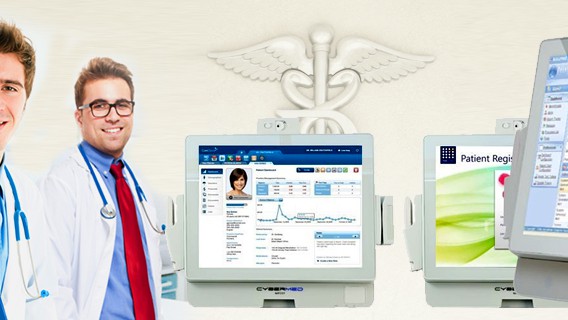When we hear the word “redundancy,” we often associate it with inefficient or wasteful designs or treat it as a flaw to be avoided. However, redundancy is frequently a critical component of reliability, ensuring that if one element of a system fails, other components can take over that function.
This sort of reliability is especially critical in the healthcare sector, where lives can depend on a device functioning correctly. In today’s article, we’ll explore how redundancy is implemented in medical computers on multiple levels, including hardware, software, and broader computing systems.
Redundancies in Hardware
Article Guide
In computer hardware, redundancies are typically built into either data storage or power supply. These are computers’ most common points of failure and have the most dangerous consequences when they break down. Therefore, computer designers often integrate data protection redundancies like RAID storage and backup sources of electricity such as internal power supplies.
RAID Storage
RAID (Redundant Array of Independent Disks) is a data storage technology that uses multiple storage units to ensure reliability and ease of access.
In a RAID drive system, data is written onto multiple storage devices within the same system. RAID is not necessarily a data backup system that focuses on recovering lost files. Instead, it focuses on preventing data from being lost in the first place. RAID storage comes in levels 0, 1, 5, 6, and 10, with increasing complexity and reliability.
While historically implemented with hard disk drives (which are more susceptible to failure due to their reliance on moving parts), the same principles can also be applied to solid-state drives. Combining these two technologies creates a highly resilient and reliable data storage solution.
Internal Power Supplies
In an electricity outage, hospitals will have backup generators on-site to provide power. However, these generators can take several minutes to spin up to full effectiveness, minutes that can be the difference between life and death for patients in critical condition. For this reason, medical-grade computers and other devices will feature internal power supplies that allow them to continue running even if the facility’s power has been lost.
Most computers include internal power supplies, but these are extremely small and only meant for low-demand tasks like running the computer’s BIOS clock. A dedicated IPS that can sustain a computer’s operation is usually only found on specialized devices, such as medical-grade computers.
Redundancies in Software
In software, redundancy often takes the form of running multiple instances of the same application. This way, even if one instance of the app fails, another can take over for it. This is especially critical for applications or software that runs life-sustaining equipment, such as ventilators or pacemakers.
On a higher level, an entire PC system can be copied onto another computer as a spare in case the original fails. This ensures that even in the face of catastrophic software or device failure, a user can have a replacement up and running as quickly as possible.
Geo-redundancy
Geo-redundancy is a concept related to the physical distribution of data centers and computer systems. If a hospital stores all of its data on-site and is later struck by a natural disaster such as fire, earthquake, flooding, etc., both physical infrastructure and data will be destroyed.
The most common form of geo-redundancy is cloud-based storage. Storing data on the cloud ensures that the data will remain intact even if the hospital is affected by a disaster or an off-site server is damaged.
Conclusion
Far from being something to avoid, redundancy is often crucial to ensuring reliability in medical computers and other devices. Whether including an internal power supply in the computer, maintaining data backups, or storing your files off-site, embracing redundant solutions can help you swiftly recover from disasters and setbacks.
If your healthcare group needs medical-grade tablets and computers that integrate redundant safety and reliability solutions, contact the team at Cybernet Manufacturing. We’d be happy to discuss how our devices integrate multiple levels of features for better reliability.
Join the conversation and connect with us on this and other relevant topics – Follow us on Facebook, Twitter, Instagram, and LinkedIn.
How Medical Grade Computers Improve the Standard of Care in the Medical Profession
August 3, 2015
The face of the healthcare industry has changed drastically in the past decade. Now, the use of devices like medical grade computers in patient rooms, emergency rooms, and operating rooms have allowed healthcare service…
0 Comments6 Minutes
You Can't
Learn from a Pop-up
But we can deliver knowledge to your inbox!
We dive deep in the industry looking for new trends, technology, news, and updates. We're happy to share them with you.
Knowledge, News, and Industry Updates Right in Your Inbox



